
Malaysia has announced Solar ATAP (Accelerated Transition Action Programme) — the new rooftop solar scheme launching 1 December 2025. It will replace the Net Energy Metering (NEM) scheme, which closed to new applications on 30 June 2025.
That leaves many asking:
- “Should I wait for ATAP?” or
- “Should I just install SelCo now?”
To answer, let’s break down the three schemes — SelCo, NEM, and ATAP — and how they affect real-world users.
1. Solar schemes in Malaysia and how they work
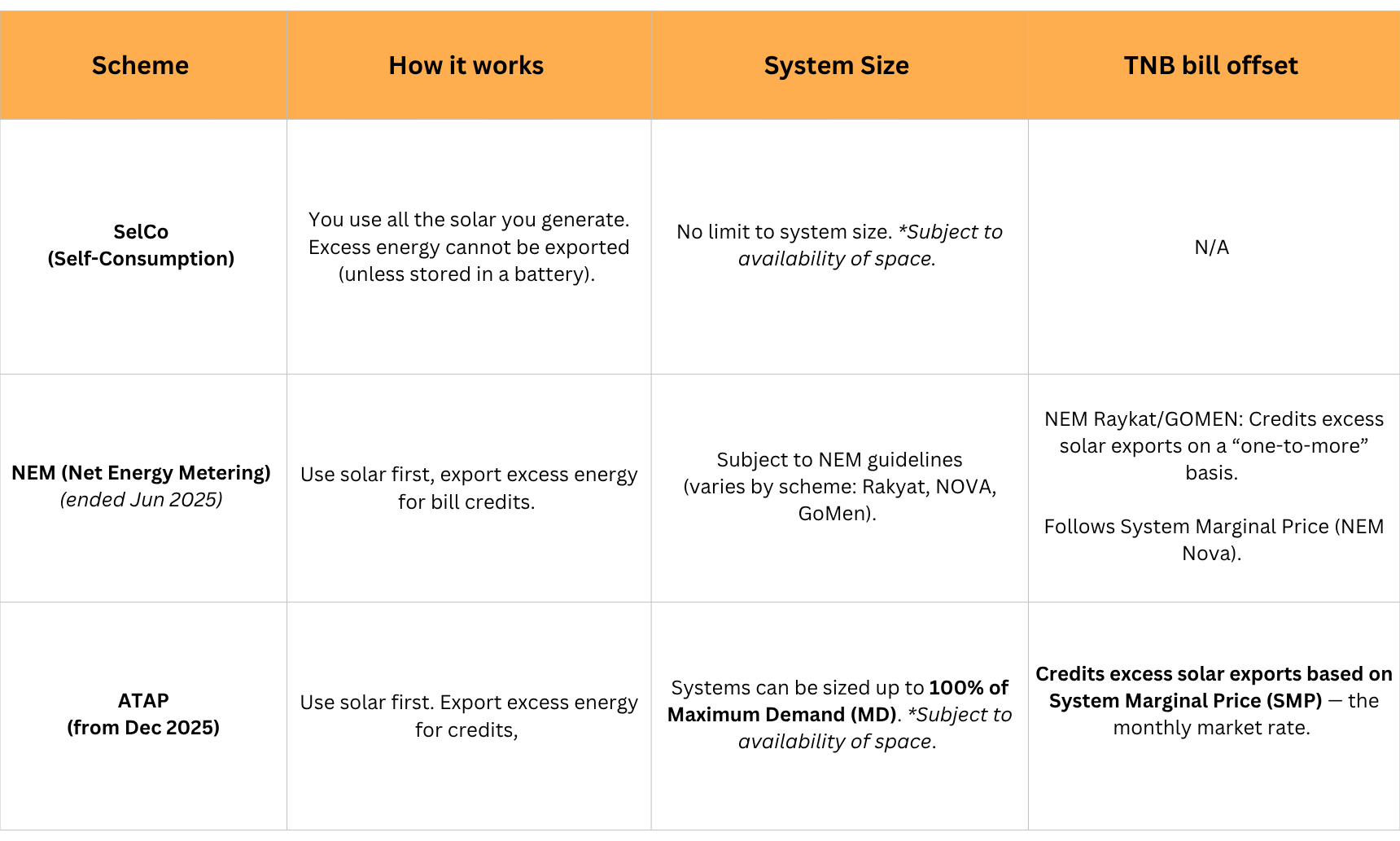
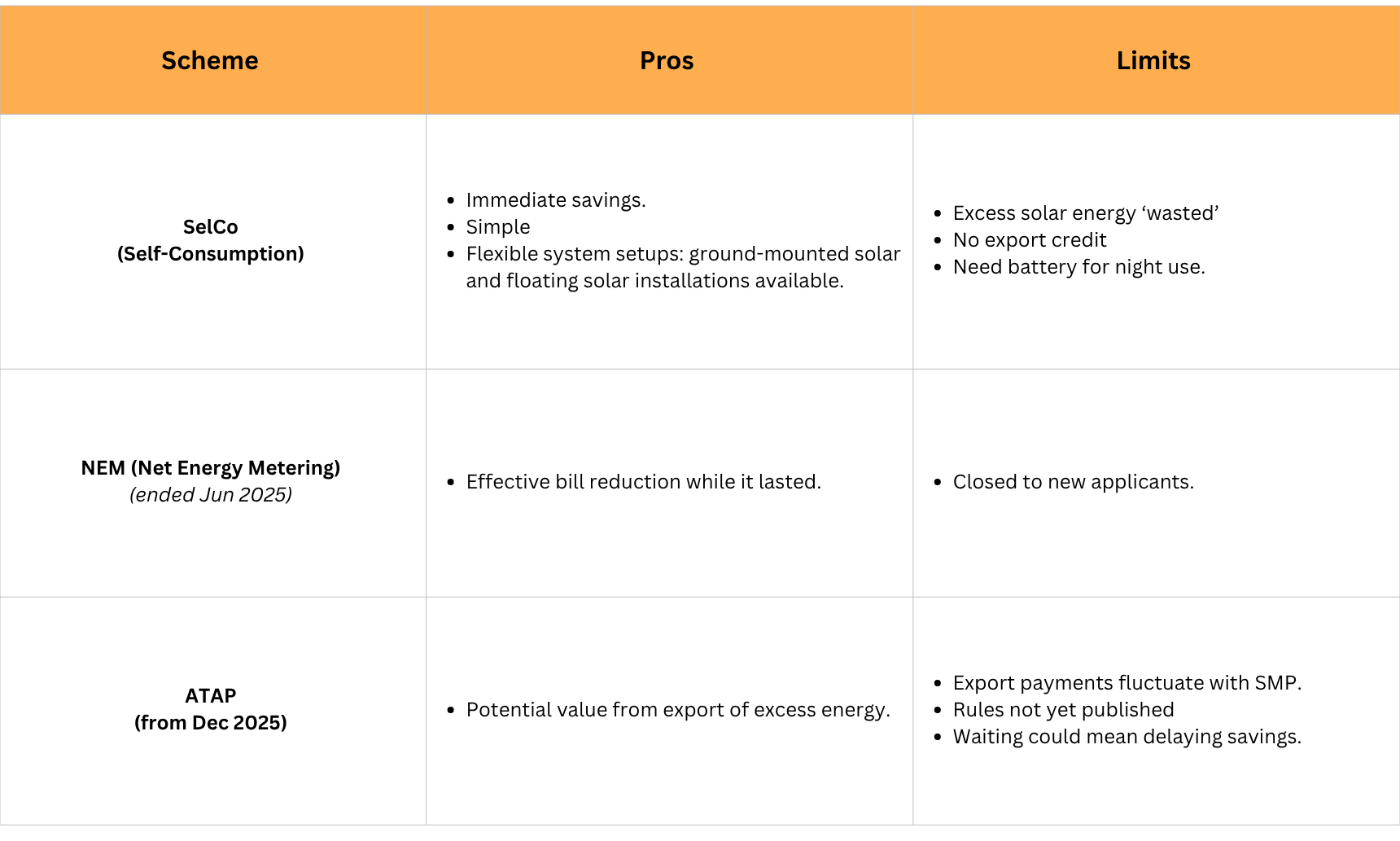
2. Quick FAQ
Q1. Is SelCo the better option?
SelCo doesn’t let you export surplus energy to the grid, but for users with steady daytime usage, it can still be the best fit:
- You save immediately by offsetting the energy, capacity, and network charges on your TNB bill.
- You can reduce “waste” by sizing your system closer to your usage or by adding batteries. *Battery energy storage systems (BESS) is required for large systems above 72kWp starting 1st January 2026.
Example: A café running 8–5 uses most power when solar produces the most energy. Even if some weekend surplus is unused, weekday savings make SelCo effective.
Q2. What does “paid at monthly SMP” mean?
The System Marginal Price (SMP) is the “wholesale” electricity price set monthly in Malaysia’s power market. It reflects supply and demand — like petrol prices moving up or down.
- If SMP is higher, your exported solar is worth more.
- If SMP is lower, you earn less.
This means export income (for existing NEM Nova and future Solar ATAP schemes) isn’t fixed; it changes month by month.
Q3. What does “100% of Maximum Demand (MD)” mean?
Maximum Demand = your site’s peak electricity usage (when all or many appliances are on at once). Solar ATAP lets you size your solar system up to that level.
Example: A factory with 500 kW MD could (in theory) install up to 500 kW of solar. During peak hours, your roof’s solar panels could cover all energy needs; at off-peak hours, excess energy can be exported for SMP credit.
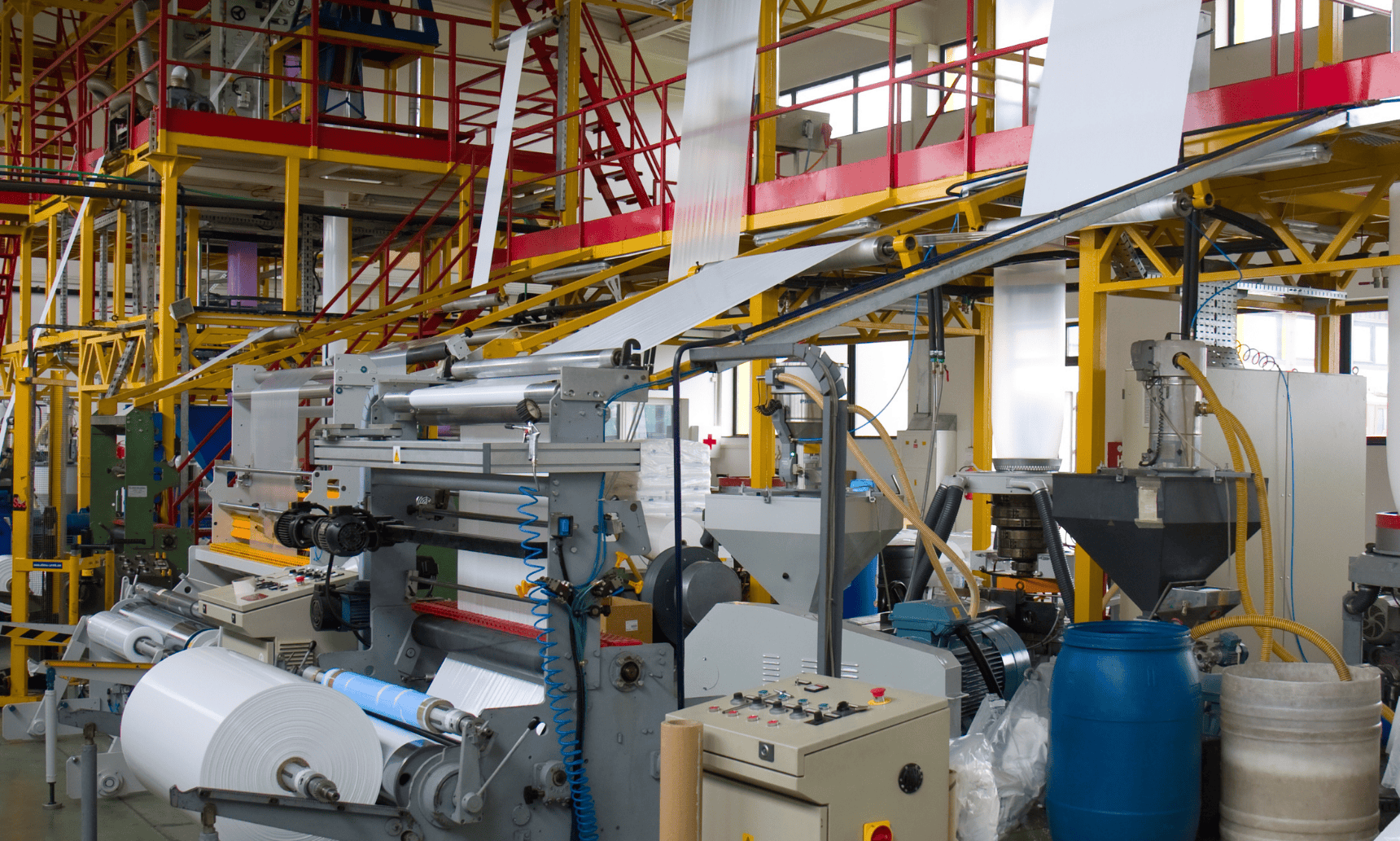
3. What We Don’t Know Yet
- Can existing SelCo users switch to ATAP?
- Will existing NEM users be able to migrate to Solar ATAP?
- Will Solar ATAP have quotas like NEM?
- Will extra costs (fees, batteries, grid charges) apply to Solar ATAP?
- How volatile will SMP be month-to-month?
Tip: Turn on post notifications for our social media and check back on our site. We’ll keep you posted the moment ATAP’s official rules are released!
4. Decision Guide
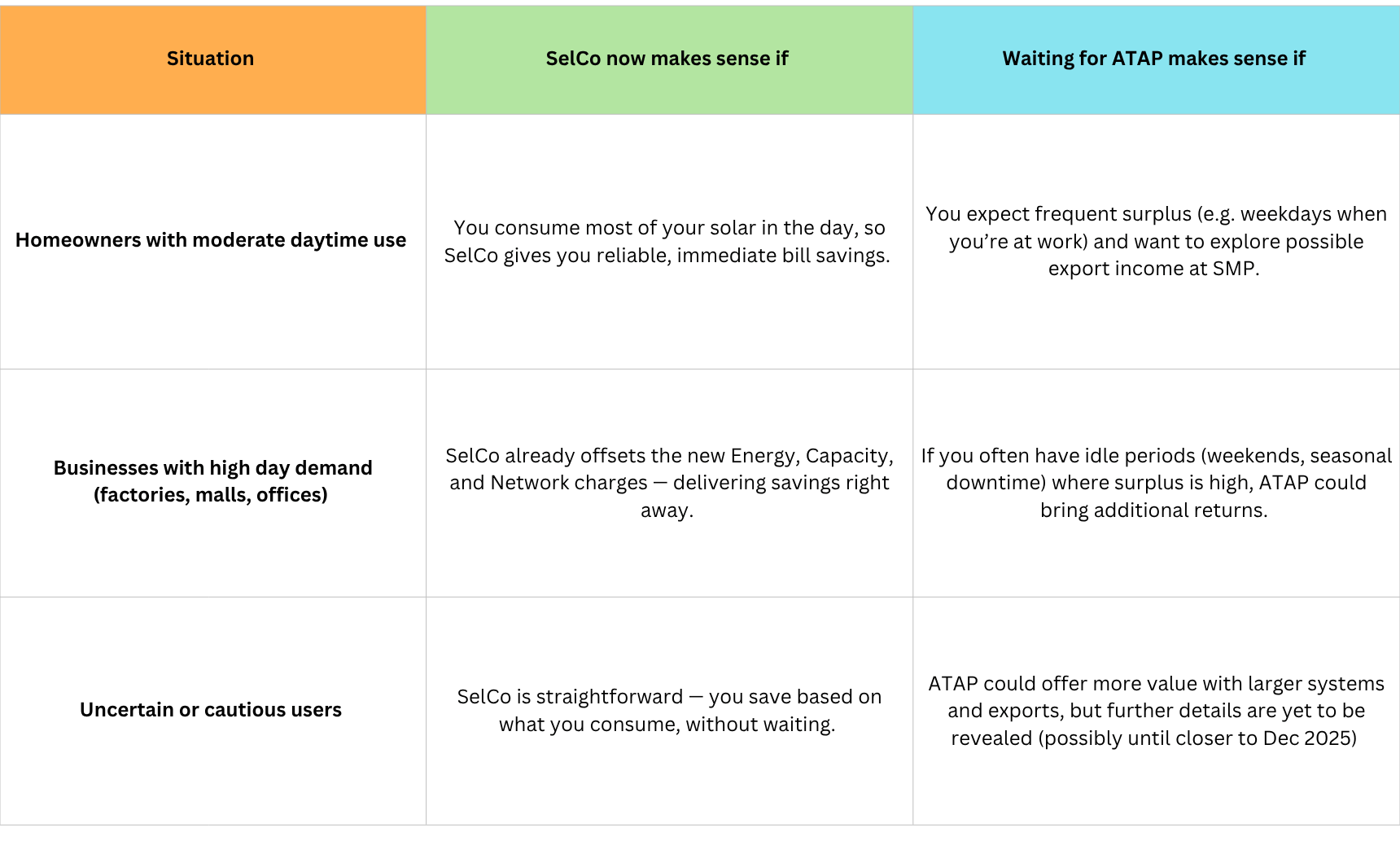
The logic:
- If your usage is high during the day, SelCo savings begin immediately.
- If you expect significant surplus, ATAP might give extra value — but you’ll need to wait until rules are confirmed.
%20in%20a%20business%20premise.png)
5. What You Should Do Right Now?
You don’t need to figure out technical details alone. Here’s what matters:
- Check your usage profile — Look at your last 12 months’ bills. See if most of your electricity is used in the day.
- If you think SelCo fits — or if you’re still unsure whether to wait for Solar ATAP — talk to us. Free consultations available, no strings attached.
- Our energy experts can model SelCo savings for you today.
- We can also run projections based on conservative System Marginal Price (SMP) estimates for ATAP.
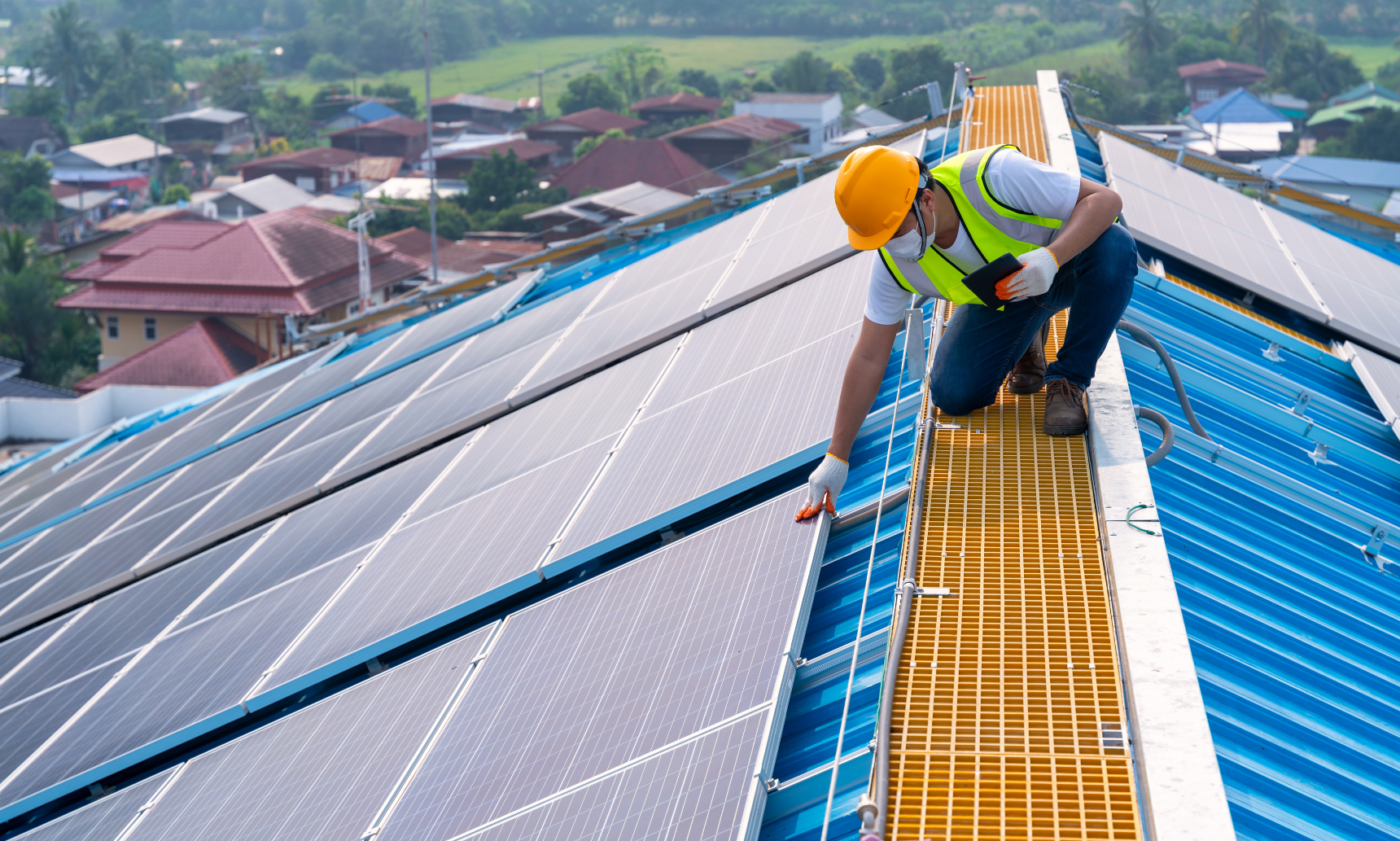
Bottom line
If SelCo matches your usage, you can already begin saving today — it delivers immediate value for users with steady daytime demand. Solar ATAP may open new opportunities once its rules are released in December 2025. Since the details aren’t published yet, the best step is to understand your own energy profile and explore what makes sense — without rushing into a decision. What matters most is having the right partner by your side.
As one of Malaysia’s trusted EPCC solar companies, Sunview provides one of the best solar panel system designs, and end-to-end installation services to match your site and usage profile. Whether you start with SelCo now or evaluate ATAP later, we’ll ensure your solar investment is clear, reliable, and future-ready — with confidence.
*Disclaimer: For informational use only. Seek professional advice before proceeding.






